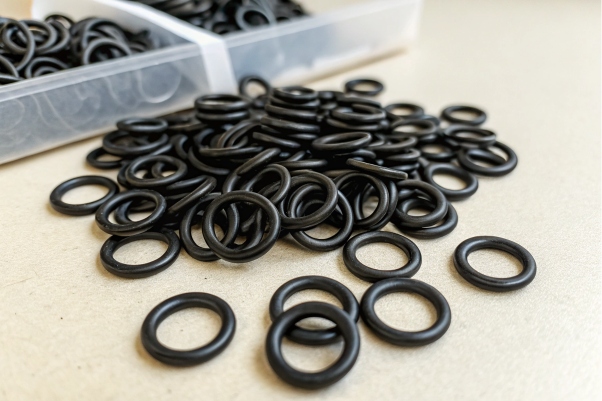Thermoplastic elastomers (TPE) have become increasingly popular in various industries. But is TPE a rubber or plastic? Let's dive into this question to better understand its properties and applications.
TPE offers the flexibility of rubber and the moldability of plastic.
TPE is often seen as a hybrid material. But does it belong to rubber or plastic? Stick around to uncover the key differences.
Are you curious about the benefits and uses of TPE? Continue reading to learn more about this versatile material.
What is TPE?
TPE, or thermoplastic elastomer, is a class of copolymers that combine the best properties of both rubber and plastic. These materials are soft and flexible like rubber but can be processed like plastics, offering several advantages to manufacturers.
TPE combines flexibility and moldability, offering versatile performance.
TPE is made up of two main components: thermoplastic materials and elastomers. The thermoplastic material gives TPE the ability to be melted and molded multiple times, while the elastomeric component provides flexibility, durability, and resistance to wear and tear.
Key Features of TPE:
| Feature | TPE | Rubber | Plastic |
|---|---|---|---|
| Flexibility | High | Very High | Low |
| Recyclability | Recyclable1 | Limited | High |
| Moldability | Excellent | Low | Excellent |
| Durability | Moderate | High | Moderate |
Is TPE Flexible or Rigid?
TPE is known for its flexibility, but the degree of flexibility can vary based on the formulation of the material. Some types of TPE are more rigid, while others are highly flexible and elastic.
TPE can be formulated to be flexible like rubber or rigid like plastic.
TPE’s flexibility makes it ideal for applications like seals, gaskets, and soft-touch grips. However, TPE can also be rigid in certain applications, such as in automotive parts, where a more rigid formulation is needed.
TPE's flexibility can be adjusted by altering the ratio of hard and soft segments in its molecular structure. This versatility allows it to be used in a variety of industries, including automotive, healthcare, and consumer goods.
Flexibility of TPE vs. Rubber:
| Property | TPE | Rubber | Plastic |
|---|---|---|---|
| Flexibility | Adjustable | Very High | Low |
| Common Uses | Seals, grips, automotive | Tires, seals, gaskets | Rigid parts, packaging |
Is TPE Eco-Friendly?
TPE is often seen as a more environmentally friendly alternative to traditional plastics and rubbers. Since TPE is recyclable, it reduces the environmental impact compared to non-recyclable rubber and plastic.
TPE is recyclable and offers a more sustainable option for manufacturers.
TPE’s recyclability is a significant advantage in industries looking to reduce their carbon footprint. Many TPE materials can be recycled and reused, making them a more sustainable choice for various applications.
In addition to being recyclable, TPE can be produced with fewer toxic chemicals compared to traditional rubber, which makes it a safer material for both production workers and end-users.
TPE Environmental Benefits:
| Benefit | TPE | Rubber | Plastic |
|---|---|---|---|
| Recyclability | Recyclable1 | Limited | High |
| Non-toxic | Yes | Varies | Varies |
| Carbon Footprint | Lower | High | Moderate |
Is TPE a Rubber or Plastic?
The key question: is TPE2 a rubber or a plastic? The answer lies in its unique properties. TPE combines the elasticity of rubber with the processability of plastic.
TPE is both a rubber and a plastic, depending on how it is used.
TPE is classified as a thermoplastic material3 that behaves like rubber when stretched but can be processed like plastic. Unlike rubber, which requires curing, TPE can be molded and remolded multiple times without losing its elastic properties4.
TPE's ability to combine these two qualities gives it a wide range of applications. It is used in everything from automotive parts to medical devices, where it combines the advantages of both materials in a single product.
Rubber vs. TPE:
| Property | TPE | Rubber | Plastic |
|---|---|---|---|
| Elasticity | High | Very High | Low |
| Processability | High (moldable) | Low | High (moldable) |
| Durability | Moderate | High | Moderate |
Difference Between Rubber and TPE
TPE and rubber may look similar, but they have important differences. Rubber has been around for centuries, whereas TPE is a relatively new material.
Rubber is more durable and heat-resistant than TPE.
Rubber excels in applications where high durability and heat resistance are required, such as in automotive tires or industrial seals. TPE, on the other hand, is more versatile in terms of moldability and recycling. TPE is ideal for products that need flexibility but don’t require the extreme durability or heat resistance that rubber offers.
Rubber vs. TPE: Durability and Heat Resistance
| Property | TPE | Rubber | Plastic |
|---|---|---|---|
| Durability | Moderate | High | Low |
| Heat Resistance | Low to Moderate | High | Low |
| Moldability | Excellent | Low | Excellent |
Conclusion
TPE is a versatile material that combines the best of both rubber and plastic. While it offers flexibility and recyclability, it may not always match rubber's performance in high-stress environments. Its unique properties make it a great choice for a wide range of applications across industries.
Footnotes:
-
Recyclable TPE: Find out how TPE can be recycled, making it a more eco-friendly choice compared to other materials. ↩ ↩
-
Explore this link to understand TPE's unique properties and its diverse applications across industries. ↩
-
Learn more about thermoplastic materials and their advantages in manufacturing and design. ↩
-
Discover how elastic properties influence material choices in engineering and product design. ↩









